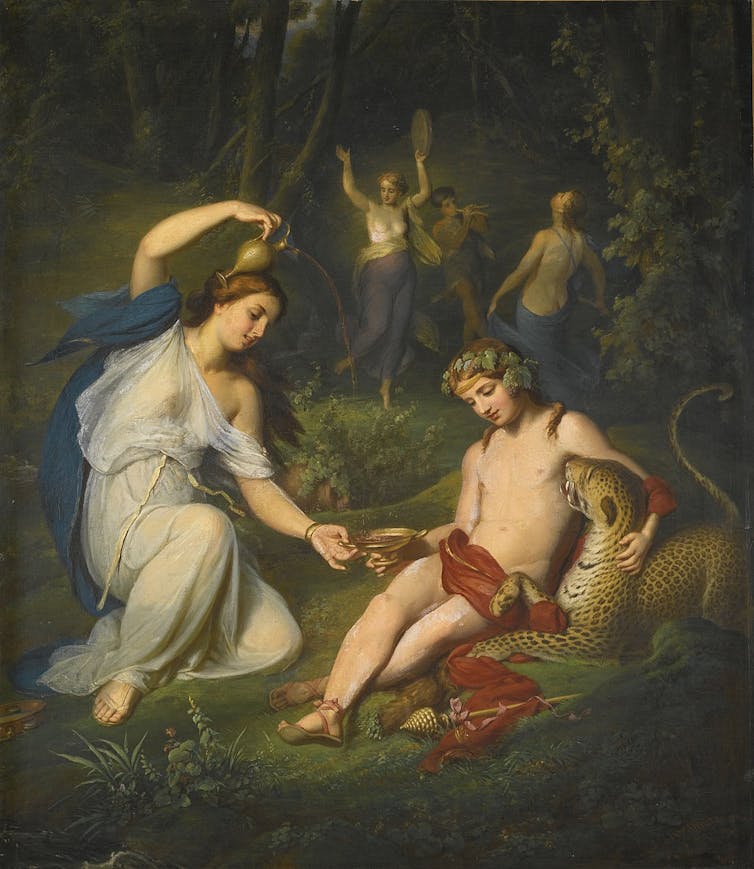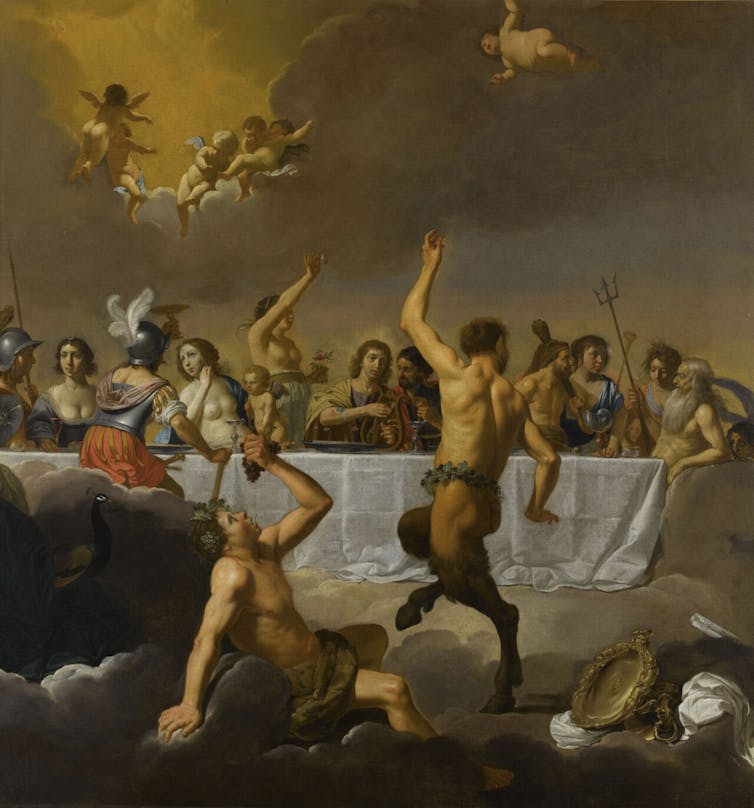Paris’s Olympic opening ceremony on July 26 was the cause of much online discussion. No moment more so, perhaps, than when several drag queens were shown seated at a long table.
Many viewers, including Pope Francis and Ayatollah Khamanei, interpreted the scene as a parody mocking Leonardo da Vinci’s painting The Last Supper (c. 1495). By extension, they claimed that the opening ceremony mocked the Last Supper, the event Christians believe instituted the Eucharist celebration – and Christianity itself. The outrage has been so intense in some quarters that the ceremony organisers have been subject to death threats.
These responses fundamentally misinterpret the scene, which was not supposed to reference the Last Supper at all. The director of the ceremony, Thomas Jolly, was principally inspired not by da Vinci’s The Last Supper, but by Le Festin Des Dieux (The Feast of God, c. 1635-1640) a painting by Jan van Bijlert.
This painting depicts the marriage of the characters from ancient Greek mythology, Thetis and Peleus, with the god Dionysus and his satyrs dancing in the foreground. This makes considerably more sense considering Le Festin is housed at the Musée Magninin in Dijon, France. The Last Supper, meanwhile, resides in Milan (quite ironically, as Milan will be the site of the 2026 Winter Olympics).
The confusion between these two scenes is not merely a product of the internet’s rage cycle. As other commentators have rightly noted, much of the confusion is grounded in the failure of Christian audiences (and others) to recognise the debt Christian iconography owes to pre-Christian Greco-Roman imagery. But more than this, a failure to recognise the long standing connection between Jesus and Dionysus.
Understanding this connection and its influence on early Christianity is crucial for understanding not only the scene at the Olympics but also the broader history of Christianity.
Jesus and Dionysus
Christianity as we know it began as a Roman mystery cult – a type of religious expression that emerged out of dissatisfaction with Rome’s traditional religious practices.
Rome’s so-called “civic cults” tended to be based around communal ritual with little spiritual substance for the individual believer. “Mystery cults” provided spiritual substance and direct access to the divine for individuals. These mystery religions offered believers a sense of connection with the divine and the hope of eternal life. Christianity adopted the messianic figure of a recently formed Jewish sect for their saviour. Others turned to the Greek god Dionysus, re-imagined in a similar form to that of the Jewish rabbi.

Dionysus is often described as “the god of wine and the theatre”. He and his Roman counterpart, Bacchus, are associated with debauchery, drunkenness and licentiousness. In later centuries, Christianity adopted an ethic associated with its austere monastic elements, so it’s understandable that today the comparison of Christ with Dionysus could offend or shock. But a look beneath these facile understandings of Dionysus shows a much more complex picture.
Dionysus was not just a deity associated with wine, but a god of the enlightenment that comes from placing yourself in liminal spaces, that is to say the places on the margins of society and, importantly, of nature.
With a mortal, virgin mother and a divine father (does that sound familiar?), Dionysus was ripped from his mother’s womb prematurely and so finished the gestational process sewn into his father Zeus’s thigh. He was then raised in Asia, and when he returned to Greece, his divinity was not immediately recognised.
In Euripides’ Bacchae (405 BC.), Pentheus, the Theban King, rejected Dionysus, while the relatively powerless old men and women of the city fled to the country. Later, he became known as the deity who guides reincarnation and promises immortality. In this context, the feasting of Dionysus is not just about unrestrained pleasure, but about connection and the breaking of boundaries.

The cults and churches of both Dionysus and Jesus encouraged their practitioners to find meaning in the spaces between: life and death, the power and the might, the human and the divine. They also encouraged worship of a god who feasts with all people indiscriminately, in a culture in which eating with people was a powerful sign of relationships.
The Eucharist feast of early Christianity (which today is “communion” in most modern Christian practices), after all, had similar connotations to the Dionysaic feast. They’re both symbols of broken social boundaries, as well as the broken boundary between the human and the divine. These sentiments have largely been lost after centuries of Christian hegemony, during which participation in the Eucharist has been used as a political weapon and as a way of establishing and publicly enforcing societal norms.
It is undoubtedly true that the connections between Dionysus and Christ exist in the context of a larger blending of pre-Christian and Christian Mediterranean culture. But focusing on the specific connections between Dionysus and Christ seems particularly relevant in this situation. There is, after all, a certain irony that a type of ceremonial feasting, associated with reaching out to the marginalised and breaking boundaries, is being weaponised to reinforce boundaries and further marginalise the marginalised.
The response to the tableau at the Paris Olympics opening ceremony highlights the overlooked historical connections between Christian and Greco-Roman religious imagery. But it also provides an opportunity to recognise the profound connections between Dionysus and Jesus. Particularly their shared themes of divine suffering, resurrection, and boundary breaking.

Looking for something good? Cut through the noise with a carefully curated selection of the latest releases, live events and exhibitions, straight to your inbox every fortnight, on Fridays. Sign up here.
Katie Kelaidis does not work for, consult, own shares in or receive funding from any company or organisation that would benefit from this article, and has disclosed no relevant affiliations beyond their academic appointment.
This article was originally published on The Conversation. Read the original article.







